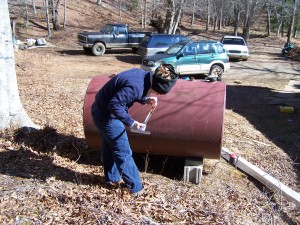Although the degree of impacts and rate of climate change is debatable, it is certain that it has a long-term effect on temperature rise, extreme weather events, changes in precipitation leading to flash floods and drought, changes in forest communities, and increases in insect threats and diseases. Equinox has always been at the forefront of our field by using creativity, innovation, and proper planning to design, implement, and monitor a wide variety of environmental projects. Our core service groups and their respective staff members work in unison to continue to shape the mold and lead by example. Together we help develop solutions for minimizing environmental impacts, and that includes responding to climate change through both mitigation and adaptation. This is the first of a three-part installment that shows just how each of our three service groups addresses climate change.
Conservation Planning
Equinox’ Conservation Planning Group is well equipped to address impacts from climate change and greenhouse gas reduction through its Partnership and Capacity Building, Water Resource Planning, and NEPA, Regulatory Permitting, and Due Diligence services. These services are vital pre-cursors to addressing on-the-ground issues and compliment Equinox’ Ecological and Environmental Design service groups’ capabilities.
Partnership and Capacity Building, one of the Conservation Planning Groups flagship services, is known for facilitating collaboration between agencies, organizations, and individuals to expand their capabilities and extend their resources to get things done. Equinox has extensive experience bringing partners together, keeping them engaged, developing and executing public relations strategies, recruiting volunteers, engaging landowners, and securing funding. Addressing climate change requires many partners and Equinox is well-suited to bring the appropriate parties together to develop momentum towards mitigating and adapting to climate change.

Climate scientists predict changes in the frequency, intensity, and duration of precipitation events as one effect of climate change resulting in water quantity and quality problems. On one end of the spectrum, reduced precipitation can lead to drought and water supply shortages, while on the other end of the spectrum, increases in precipitation can lead to flooding and stormwater issues. With over 12 years of experience providing Water Resource Planning services, Equinox has the expertise to address the impacts of climate change on our precious water resources. Equinox’ environmental scientists, planners, and biologists identify water quality stressors through physical, biological, and chemical assessments. This planning considers the context of the watershed in regard to land use, geology, and climate. Resulting watershed management plans incorporate best management practice recommendations and strategies for implementing measures that protect and improve the water supply and reduce flood hazards.

Assessing environmental impacts in advance and thinking critically about the risks associated with climate change will reduce our vulnerability to its impacts and make our communities more resilient. Equinox regularly practices these types of analysis in our NEPA, Regulatory Permitting, and Due Diligence services. As communities begin to adapt to climate change and develop strategies to mitigate impacts, alternatives must be evaluated to ensure long-term impacts to the environment are minimized.
Be sure to check in next week for the second installment of this three-part series!
